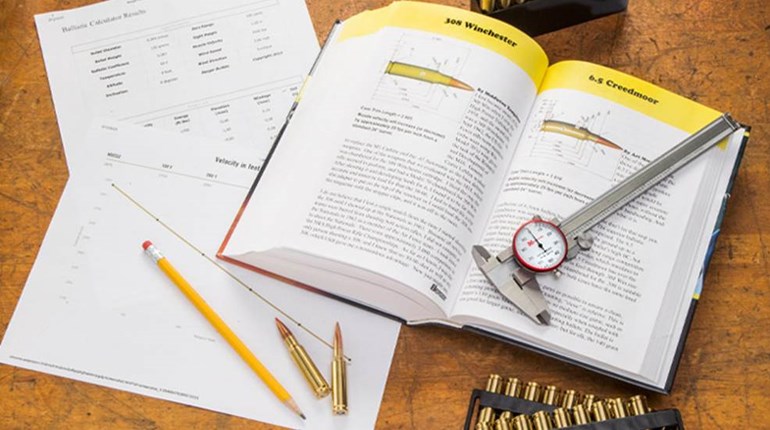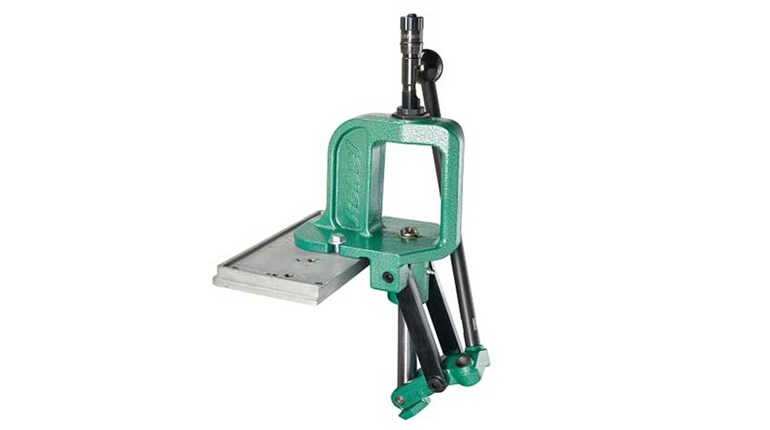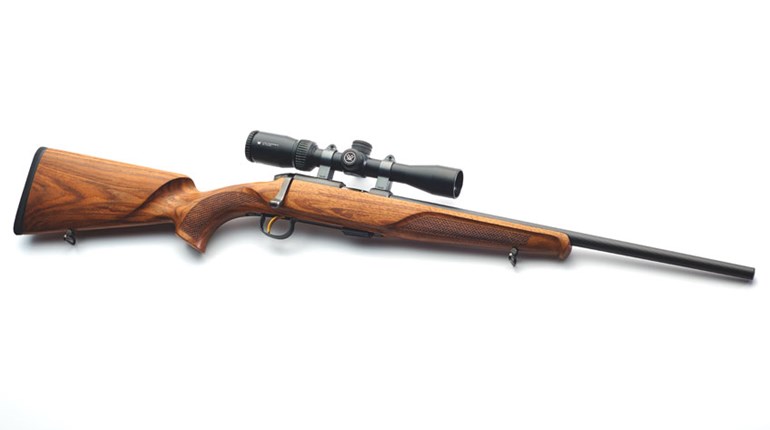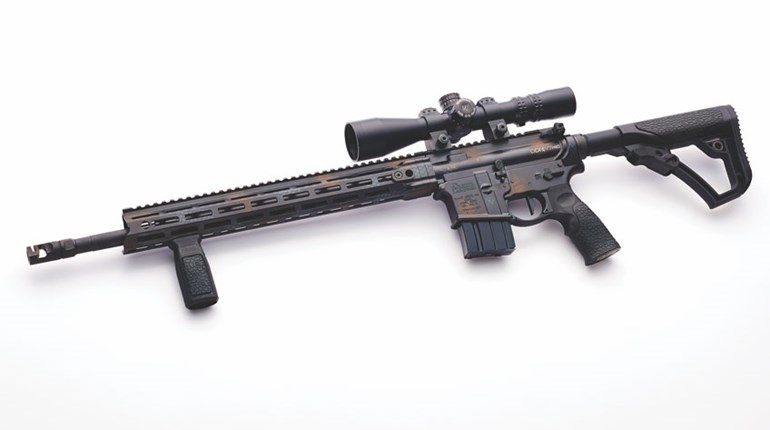
More time on the range is just about always better than less, but we overdid it in August. Between obvious pinnacles like NRA Carry Guard and Suarez International's Red-Dot course, we sandwiched the outstanding Glock Operator’s course (replete with an introduction to the Gen5 pistols). We shot roughly 3,000 rounds in about three weeks and were treated to truly superb content in all cases, but we’re still somewhat out of gas.
The decided upside of this sort of, er, suffering <<cue the laugh track>> is a look at student populations across the venues. In the years when we did a lot of teaching ourselves, various pulses in that pool of shooters were observable on a week-in, week-out basis. As nearly any instructor could relay, trends of all sorts and qualities come and go, but a regular good look that only classes provide is not just intellectually interesting, but crucial to keeping the craft moving forward. Safer and more effective, of course, but also more fun.
For people in our line of work, this is also a topic feast, and today we bring you a first installment.
A lot of shooters we worked with aren’t getting the full benefit from the individually strongest proximate asset to their firearm—their thumbs.
If you subscribe to the “average” of multiple modern techniques, this may not be a surprise. These are generally not so different as their commercially motivated proponents proclaim (an observation there, not a criticism). Indeed, the truly sound ones share a common rudiment—the fingers, per se, were long ago absolved of major gripping duties. Replacing them with larger and stronger muscle groups that deliver primary left/right retention power via the palms, the fingers (on the front strap) now clamp rearward toward the second and third joints of the thumbs (on the back strap and beavertail). Ideally, the digits now contribute what might be called “command and control” inputs.
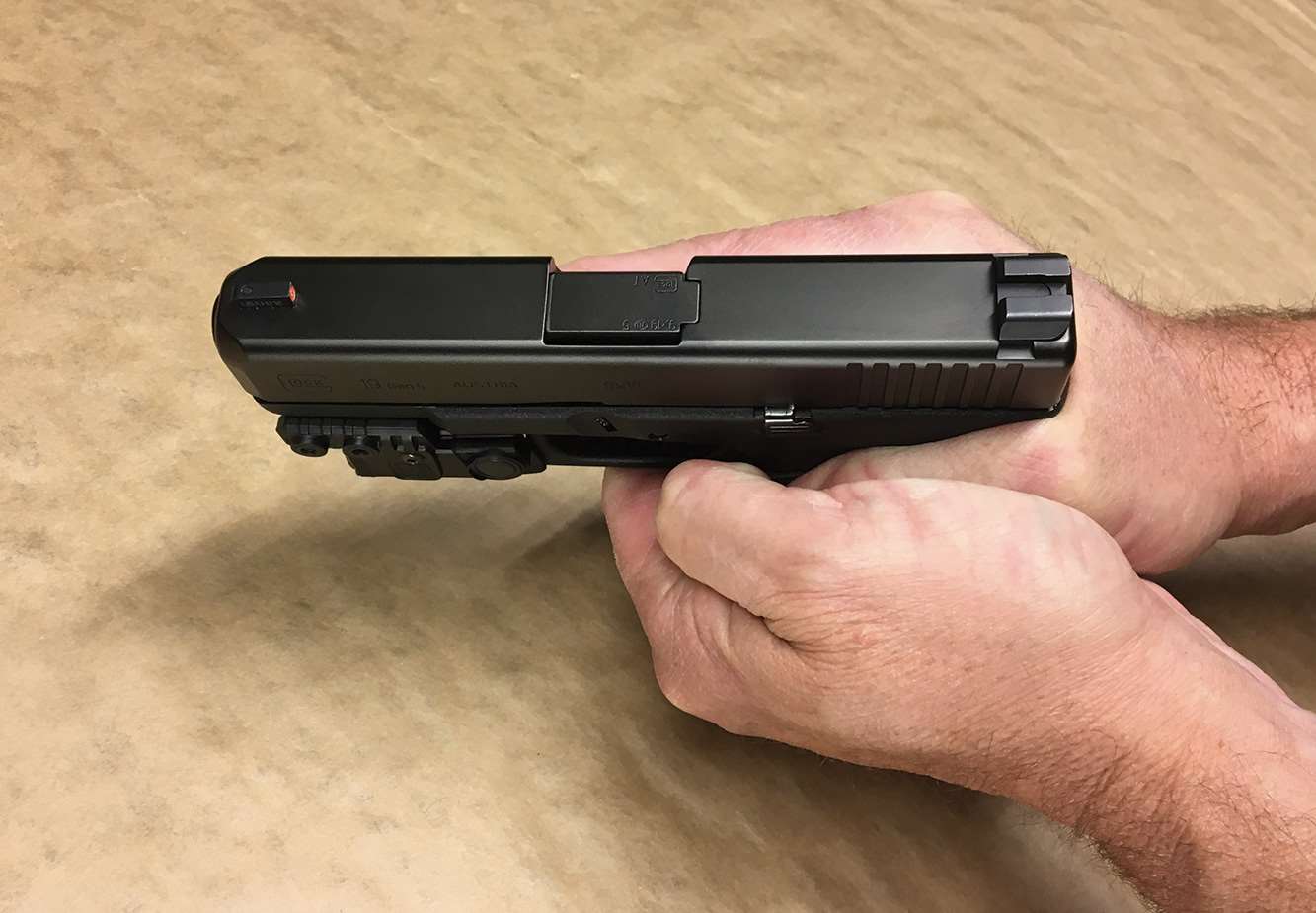
For a host of reasons, this is better than almost any predecessor technique, and certainly from the standpoint of being physically “democratic.” Even lightly built handgunners can learn to control almost any caliber up to .45 ACP with relative comfort, confidence and accuracy if they are correctly instructed.
But if you are keeping a tally, you’ll have noticed that the last joint in the thumb isn’t contributing much. In a surprise to no one, we wager, we have a suggestion about how to put that sluggard back to work, and in a way that can easily cut a third from follow-up shot times, as well as set up faster transitions to new targets.
Ever notice how well-developed the pointing reflex is? How often, for instance, do you miss when reaching for a doorknob, a fork, or even something small and semi-perilous like, say, a thumbtack? Here, don’t think of the grasping action that terminates the movement, but rather the target acquisition act that begins it. It’s fair to argue that a lot of this precision comes from the index finger, which is kind of busy when you’re shooting, right?
But if you put a hand behind your back and touch your thumb to any sequence of fingertips, you’ll make the jump to our point with ease: Even without seeing the target, the brain’s ability to “point” the thumb is also superbly developed—both speedy and accurate. If you touch a different fingertip each time in an ersatz test, it’s easy to do blind touches at three or four per second, and permitting multiple touches on the same finger—like a follow-up shot—easily adds between 30 and 70 percent more speed (allowing for small span differences–reaching the pinky is longer and somewhat slower than the middle finger).
It’s also a literally powerful capacity in the muscular sense, and one that we can use to improve handgun technique in multiple, interlocking ways. Better still, what we’ll suggest is not a teeth-clenching, dripping-brow sort of effort or change. Rather, it’s a small but precise action that needs to become conscious, as opposed to merely letting the last left and right phalanges go along for the ride with each press of the trigger.
If you hold a largish smartphone between the thumb and forefinger, this is all the force that is needed. Note, too, the proper direction for the force: It’s a modest press, by both thumbs, toward the target.
At least four good things will happen if you build this into your grip mechanics. While we’d make no claim to know the neuro-optics or neuro-physiology in a literally scientific way, the objective results are still quite plain. The visual aspects of aiming and the physical actions of pointing are mutually supportive, and have the effect of bringing the visually tracked sight back into a demonstrably smaller area of the target. In turn, this shortens (or eliminates) at least one “proof” cycle needed to realign the sights on target. Depending on how you and your pistol shoot/cycle/recover and the precision of the shot you’re executing, this can cut between .03 and .10 seconds out of the time needed for a second shot on the same target.
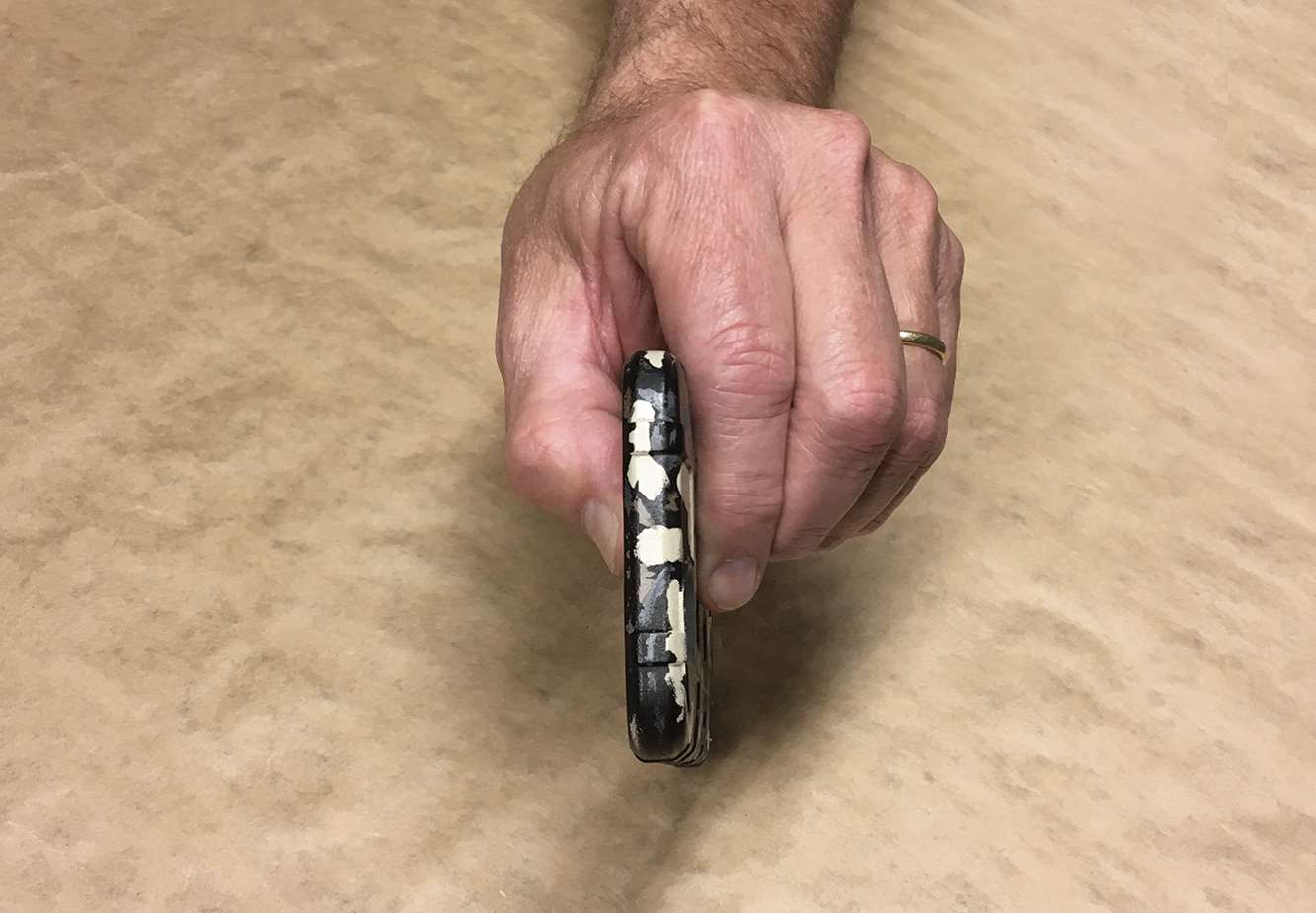
Next, do the thumb press in a short-sleeved shirt, and watch the muscular changes on the inside of the strong-side arm. Tightening only grip (fingers) generally shows tension changes only to the elbow, whereas pressing the thumb forward will bring muscles up to mid-bicep into play. We grant that this effect won’t reproduce identically in all shooters, but it does illustrate how more and larger muscle mass is acting to dissipate recoil energy, and correspondingly to decrease overall movement.
Concomitant to this is more of “you” on the gun. The best execution of the forward press also puts part of the pad of the strong side thumb, and the outboard side of the weak side thumb on the firearm. While the surface area is small and tension necessarily modest, these occur in helpful locations in two senses. The first is that both are well forward of the axis of rotation—as with any lever, they are force-multipliers against the inescapable upward, backward motion of recoil. Second, the weak side thumb can “trim out” some of the steering that can occur in both overly aggressive strong-hand grip and too-rapid trigger press. (Ideally these are unlearned with sufficient dry practice, but the counter-rotational forward drive of the thumb remains helpful.)
A sidebar here: Some well-intentioned folks will argue that if the recommended side thumb pressure wanders up onto the slide, it can cause malfunction or injury. Just. Not. So. Period.
The last benefit is sufficient wrist tension. Often attributed to grip pressure, there is ample evidence that this is instead a misunderstanding—and a damaging “misteaching”—that has been going on for literally decades. Poor wrist tension is correctly but unhelpfully called “limp-wristing” by many coaches and instructors, but their prescription is commonly ineffective: “Grip harder!” Up to and often beyond the point where the hands (especially in light-statured shooters) begin to shake, this recommendation is of very limited help. The problem is more one of timing than of out-and-out strength.
This is so because people are squishy. Given that we’re about 60 percent water (more for the young), it’s not a surprise. While all the factors are complicated, we care about one upshot in particular: It means we interact with the world in tenths or, when very fast, hundredths of a second. In contrast, firearms are mostly millisecond devices, or a very few hundredths of a second (a standard 115-grain 9 mm projectile travels well more than a foot every 1/1000th of a second, for instance, and complete cycling in a fast semi-auto about 60/1000ths). This means we store energy relative to the gun, and our ability to feed that energy back with appropriate haste is what keeps a semi-auto running.
A limp wrist allows ignition energy to linger to the point of uselessness in the body. It’s routine to see a shooter with such improper technique (and the corresponding malfunctions) allow energy to ripple through tissue all the way to the waist, and then—finally—back to the pistol. No wonder reliability suffers.
Pressing the thumbs forward is a vastly more reliable way to tension the whole system in the crucial, time-wise locale of the pistol—forward of the elbows. That the necessary tension has little to do with grip strength reached us by way of a memorable demonstration courtesy of Thunder Ranch’s Clint Smith: Precise 25-yard shots with only his thumb and index (trigger) finger on the firearm, yet the pistol would cycle as expected. There was arguably, no “grip” at all—weak, strong, or otherwise—in a conventional sense. Thumb rigidity was the sole available structure to keep energy where and when it was needed, and did so admirably.
There’s an arguable fifth benefit in our posited thumb press, though it won’t apply equally to all Carry Lifers. If you have a dot-sighted gun and ever find yourself losing or hunting for the dot (and especially on initial draw/presentation), pressing the thumbs is “the bomb.” If you’re in these shoes, here’s hoping you won’t be the first example, but we’ve yet to recommend this to a dot-gunner who didn’t end this annoying problem by embedding the press in their practice and subsequent shooting.
A caution wraps us up. We’ve noticed over the years that there’s a slight tendency in new pressers to bob the head downward to the sights as they press. There’s no easy fix for this except discipline. Going “tactical turtle”—hunching the shoulders up, and head down and forward—is unhelpful at best for reasons we’ll revisit, and at worst a dangerous, counterproductive waste of motion. Remember to move only what you must to make any shot, though even this is subordinate to “getting off the X.”
The application of our thumb press to the Carry Life is, we hope, not just obvious, but palpable: In no other type of shooting is rapid, repeatable accuracy more utterly necessary. On both the eye/brain/sights and recoil management fronts, few aspects of technique are as durably and widely useful.
Now press those thumbs, and Carry on.
Frank Winn has been studying arms and their relationship to tyranny, meaningful liberty and personal security all his adult life. He has been a firearms safety/shooting instructor for more than 20 years, and earned state, regional and national titles in several competitive disciplines.











